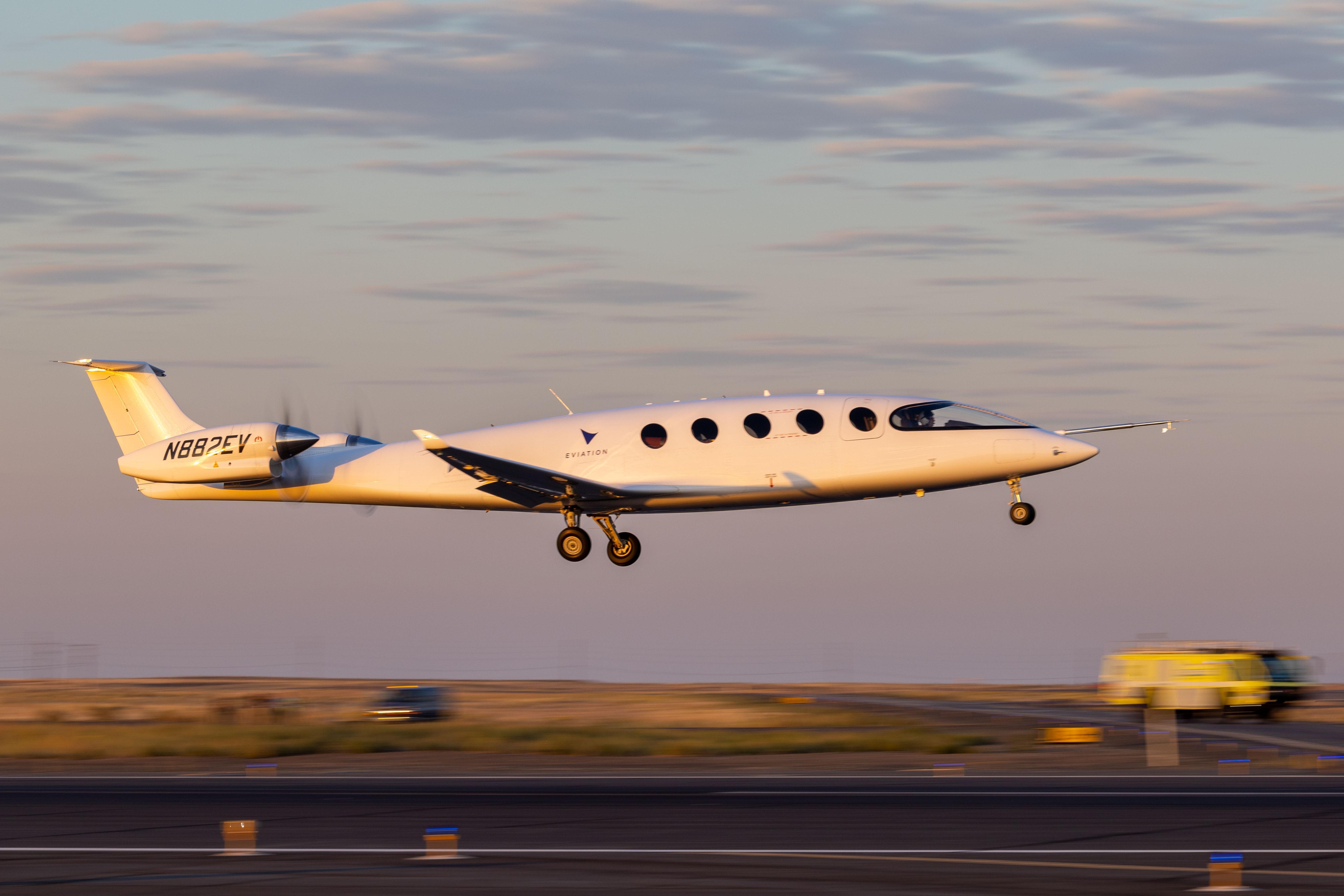
Eviation Alice made its first flight in late September.
Following the recent $7.3 billion acquisition by Parker Hannifin of Coventry, England-based aerospace supplier Meggitt, Parker Aerospace is looking to dramatically increase its involvement in more electric aircraft technology—particularly in the burgeoning advanced air mobility (AAM) market.
“We view AAM as an opportunity to develop and accelerate technologies that we were already developing for the needs of the future large commercial aircraft. That includes sustainable aviation fuel [(SAF])-friendly products and advanced thermal management solutions,” says Chris Frazer, vice president for the business, regional and AAM segment for Parker Hannifin.
Much of the technology is likely to be applicable to business aviation as the private and corporate aircraft sector seeks new paths to sustainability. This will range from more electric and hybrid vertical-and-short-takeoff AAM aircraft to business versions of new all-electric aircraft such as the Eviation Alice, which made its first flight in late September.
“Thermal management is a big part of AAM, with the need for battery cooling, while electric propulsion is a whole new system that needs to be looked at differently than a traditional combustion engine,” says Frazer. “Another area of AAM is single-pilot operation and we're developing some proprietary technologies that will allow the use of single-sidestick versus having to have a second one—while retaining the ability to be able to use the second seat for training pilots,” he adds.
“So, we really are into these innovative proprietary technologies to solve these challenges,” Frazer says. Potential growth areas Parker plans to exploit within the AAM sector, therefore, range from cockpit controls and electromechanical actuation and control systems to electric motors and inverters/controllers, electric braking systems and hybrid fuel systems and components. Other prime areas include high-power solid-state distribution and control, advanced thermal management for battery and electric-motor cooling, vibration suppression and hydraulic power packs.
As part of these expansion plans Parker met with Eviation at the NBAA Business Aviation Convention & Exhibition (NBAA-BACE) to discuss further applications of more electric technology for the Alice aircraft. Parker already has an agreement in place covering several components and systems, including cockpit controls, the electromechanical flap system, thermal management, vibration systems and sealing, but is looking to meet Eviation’s requirement for an electric braking system.
Parker provides the currently used miniature hydraulic power pack for steering and braking systems, but is exploring the development of an all-electric brake system. “Even before the Meggitt acquisition we were already investigating ways to miniaturize the Airbus A220 electric brake system. We could reuse a lot of aspects of that system such as the brake control system, and some of the software would only have to be modified. We really would have to focus on miniaturizing the electro-mechanical actuator and the wheel itself, everything else can kind of come along for the ride, so to speak,” says Frazer.
“We are hoping to collaborate with Eviation and see if we can move forward in that area because we think there's a big potential market for a miniature e-brake,” he says. Although the company also needs to be cautious moving forward, particularly about the speed at which the AAM market will develop and the challenges that still need to be overcome, Frazer says the need to decarbonize remains an overriding imperative. “Everybody sees the importance of being net zero, but we can't get there with traditional means, So if we don't address it now we'll put ourselves behind the eight ball so to speak.”
